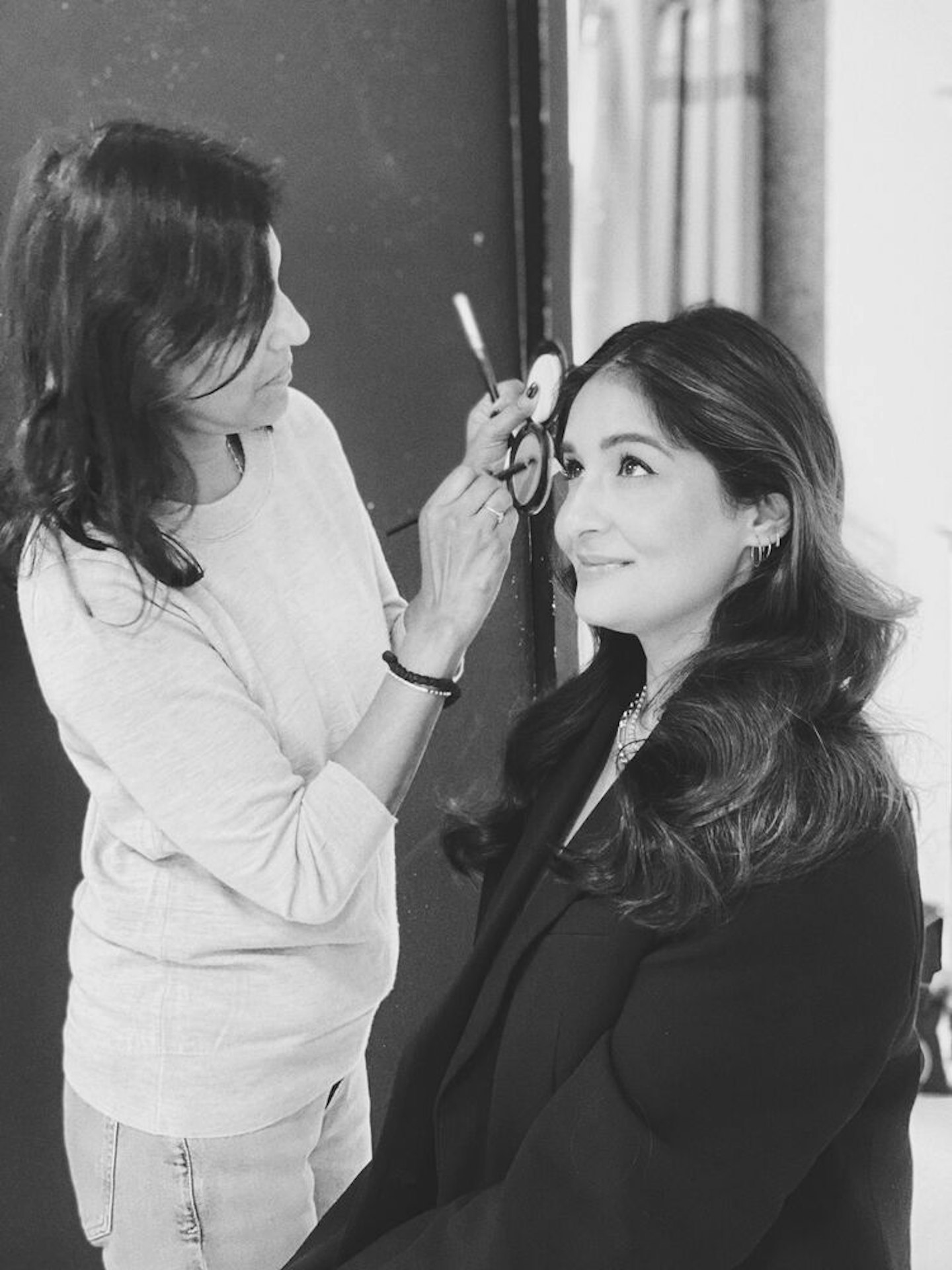The irony isn’t lost on me: a 37-year-old beauty journalist who’s spent nearly two decades working in the very industry that peddles an obsession with youth – and has written a book about beauty – now doesn’t give a hoot about anti-ageing? Yes, it’s true. In fact, the older I get (and, reality check, I know 37 isn’t remotely old), the less I want to use anti-ageing creams and succumb to face-altering injectables.
It was a photo of me with my 18-month-old daughter that was the lightbulb moment. I wasn’t wearing any make-up and you could see the little wrinkles around my eyes, my hair was second or third day old and I was smiling at her. She was so happy and, in all honesty, it’s the most beautiful picture I’ve seen of myself for a long time.

Having children (I’ve got three) has certainly made me reflect on my own childhood and how it’s shaped my beliefs around beauty, a lot of which I’ve covered in my book, South Asian Beauty. As a young girl growing up in a large South Asian household on the outskirts of London, beauty and wellbeing always played a part in our lives. My grandmother’s dressing table was a magnificent mahogany creation with a shiny lacquer top and one of those classic tri-fold mirrors.
On top of the table were dozens of shiny pots in all different sizes, packed full with kajal crayons from India and ephemera from a life left behind in Kenya (where my grandparents and father, as a young boy, lived before moving to London in the 1960s). There were elegant mascara wands, tubs of creams, pots of cherry-red nail varnish and the most glamorous lipsticks.
Although there were lots of beauty- related items, things weren’t simply there for the purpose of dressing up or the end result. It was about the process and taking a little time out for yourself.

On Friday nights after dinner, my mum would get out the apparatus for her weekly facial: a large bowl, a kettle of hot water, some essential oils to sprinkle on the water and a fresh towel. She would steam her face at the dining room table, head over the bowl, and we just knew not to disturb her for those precious 10 minutes. I understood that how special that was from a young age.
But as a second-generation British- Indian, my own upbringing often felt at odds with the culture I was raised in. Any Millennial growing up as a teen in the ’90s and noughties can vouch for the amount of makeover shows on TV. Drastically changing one’s appearance through make-up or fashion was an enticing formula. I found the makeovers completely mesmerising, a fascination that proved useful for my career in beauty writing.
I began working on a newspaper at 20, fully intent on becoming a serious news reporter, but I was quickly seduced by the beauty desk. Working on a lifestyle supplement writing about beauty products? Yes please! This was a time of ‘It’ creams, Botox and ‘trout pout’ disasters. I was using retinol at 23, wreaking havoc on my skin with time-consuming 10-step beauty routines and volunteering to try lots of wacky treatments. When contouring became a thing, I was painting zebra stripes on my face in hope of chiselling my jawline. I got a ‘pob’ (a posh bob made famous by Victoria Beckham). I would regularly have eyelash extensions and felt naked without them. Fun? Yes. But did I need any of it? Nope.

Since becoming a mother I feel it’s my duty to show my kids that life is about more than how you look. It’s how you feel. I’m very aware of the language I use about beauty around them, too, particularly given my job. Applying lipstick or concealer is never a ‘need’: I want them to see I’m happy in my skin with or without make-up.
As I get older, I’m returning to the principles of slow beauty that I grew up around. I love the meditative effect of my skincare routine, even though I now only use two or three products (including a retinoid to help with overall good skin).
I love how make-up gives me a little boost and can disguise a bad night’s sleep. At 37, I prefer how I look to when I was 27. My goal now isn’t to look radically different; I love the fact that I can see similarities in my features with my parents, sisters and kids.
Yes, it’s a cliché, but ageing really is a privilege and, to be honest, that’s the greatest beauty lesson of them all.
Beauty tips Sonia Haria will pass on to her daughter:
-
Look after your body: As part of the research for my book, I delved into the world of Ayurveda and reimagined it for the digital world. Fundamentally, we only have one body, so treat it well.
-
Oil is your friend: Oil your scalp once a week before shampooing – it can be just an inexpensive bottle of amla or castor oil. It will help to nourish your scalp for better hair. And swap body cream for light oils, which are more nourishing.
-
Don’t over-pluck your eyebrows: This is a lesson for everyone! Natural brows are always ‘in’ and, when you need a little tidy, go to an experienced eyebrow threader.
Sonia’s book, South Asian Beauty, £25, is out now.
Main image: Sonia Haria, captured bySarah Brown.

